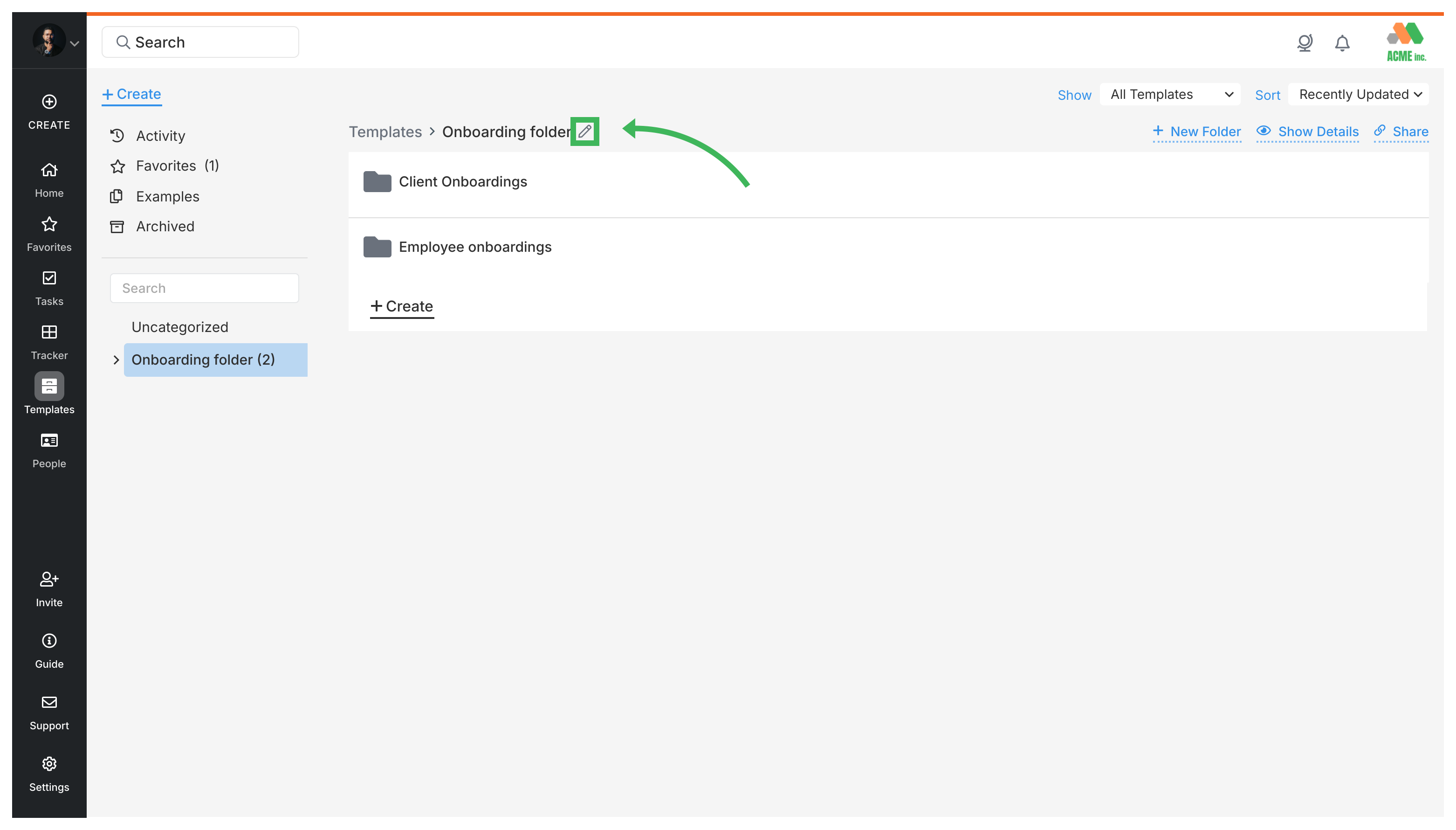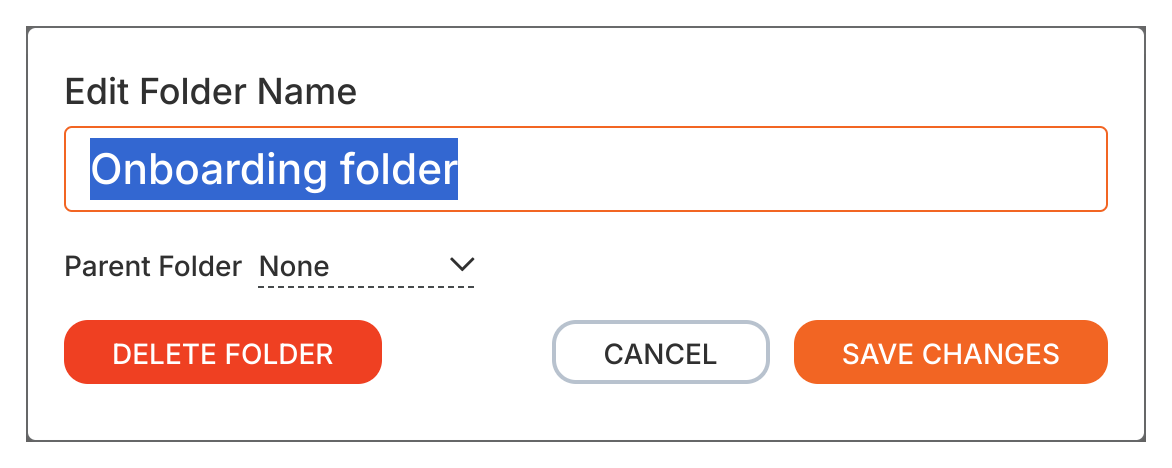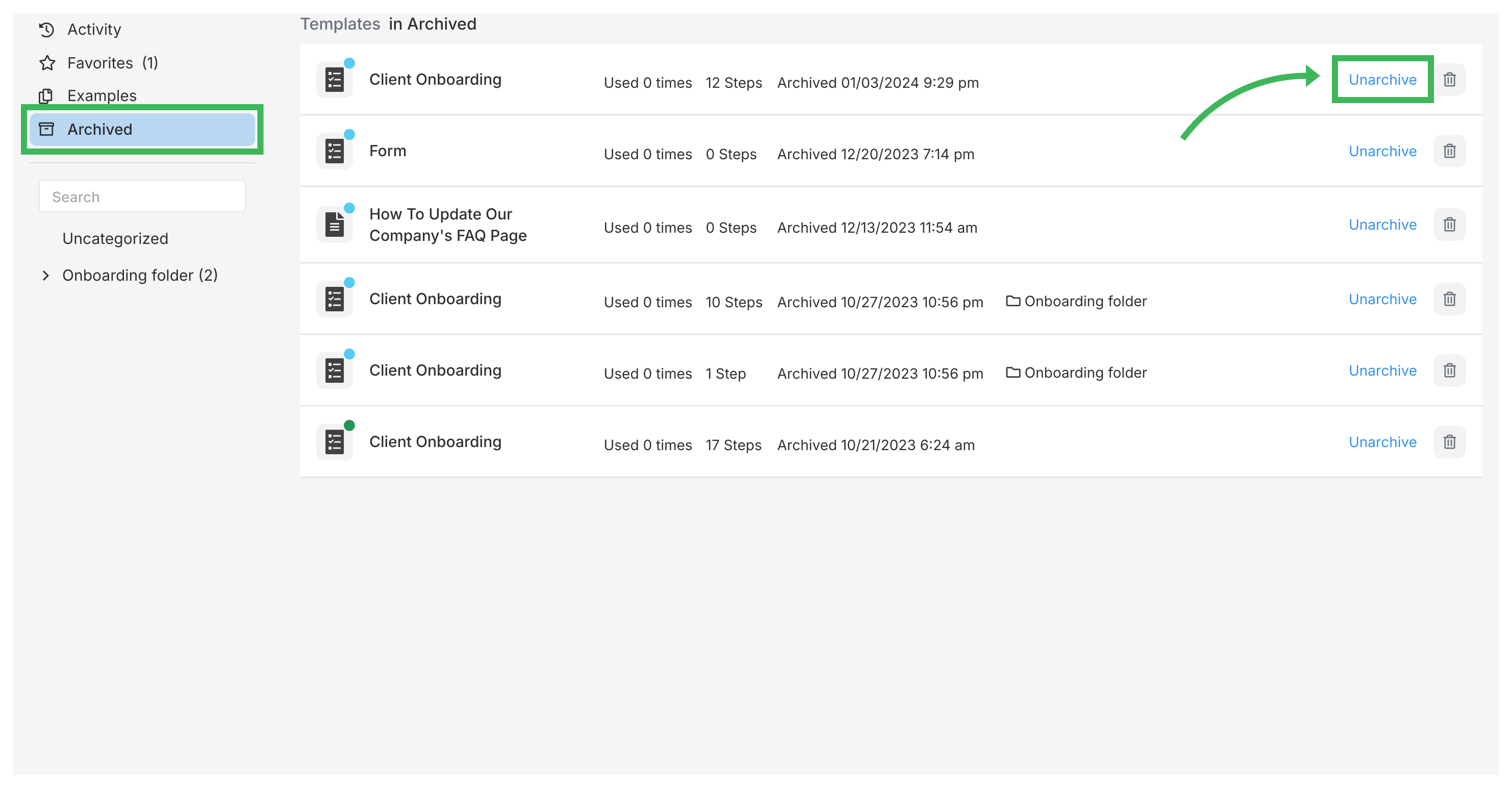Templates > Organizing templates
Using folders for templates
To organize templates in Tallyfy, create folders and drag your templates into them - it’s that simple. Once you’ve got 20 or more templates, you’ll wonder how you managed without folders.
Here’s why: Without folders, finding the right template in a large library takes forever. With them? You can locate any workflow in seconds. Teams with 50+ templates find their workflows much faster after implementing a solid folder structure.
Think of template folders like organizing cookie cutters in your kitchen drawer - you’re sorting the tools, not the cookies you’ve already baked. These folders organize your reusable workflow blueprints, not the actual work that’s happening right now.
It’s a simple but important distinction that trips up new users all the time.
- Access to the Templates section
- At least a few templates to organize (there’s no point creating folders for just one or two)
- Standard or Admin permissions - Light users can’t create folders
That last point matters. Only team members with the right permissions can restructure your template library (which prevents chaos).
- Find templates faster: A good folder structure dramatically reduces search time
- Group logically: HR templates in one spot, sales workflows in another - whatever makes sense for your team
- Cleaner templates section: No more scrolling through an endless list of templates
- Help your team: New employees find what they need without asking
The more templates you create, the more you’ll appreciate having folders. Trust me on this one.
- Go to the Templates section
- Click the New Folder button (usually in the panel on the left)
- Give your folder a clear name (e.g., “Marketing Templates”)
- Click Create
Done. Your new folder appears instantly in the left panel. Click it to open it up or start adding templates.

- Click on the folder you want to put a new folder inside (the parent folder) on the left
- Click the New Folder button again
- Give the subfolder a name (e.g., “Email Campaigns” inside the “Marketing Templates” folder)
- Click Create
You’ll see subfolders nested under their parent folder - nice and tidy.
- In the main Templates view (or inside a folder), find the template you want to move
- Click the menu icon (three dots ⋮) on the template card
- Choose Move from the menu
- Select the folder you want to move the template into
- Click Move
- Click on the folder you want to manage in the left panel
- Click the pencil icon next to the folder’s name

- In the box that appears, you can:
- Rename the folder
- Move the folder by choosing a different parent folder
- Delete the folder

Important: Deleting a folder does not delete the templates inside it. The templates will just move back to the main library view (unfoldered).
When you unarchive a template, Tallyfy remembers where it came from:
- If the original folder still exists, that’s where it goes back
- If you deleted that folder? The template lands in your main library view instead
- Go to the Templates section and click the Archived tab
- Find the template you want to bring back
- Click the Unarchive button

Keep folder names obvious - “HR Templates” beats “Human Resources Documentation and Processes” every time. You want anyone on your team to know exactly what’s inside without thinking twice.
Resist the urge to create endless subfolders. Two or three levels deep? Perfect. Five levels? You’ve built a maze nobody wants to navigate. I’ve seen teams create such complex structures that finding templates takes longer than before they had folders at all.
Here’s what works: organize by department (HR, Sales, IT) or by function (Approvals, Onboarding, Reviews). Pick one approach and stick with it. And remember - you can use tags alongside folders for extra organization. Think of folders as your main categories and tags as your subcategories.
Every few months, take a look at your folder structure. Delete empty ones. Merge similar folders. Your future self will thank you.
Tasks View > Organize tasks and processes into folders
Was this helpful?
- 2025 Tallyfy, Inc.
- Privacy Policy
- Terms of Use
- Report Issue
- Trademarks